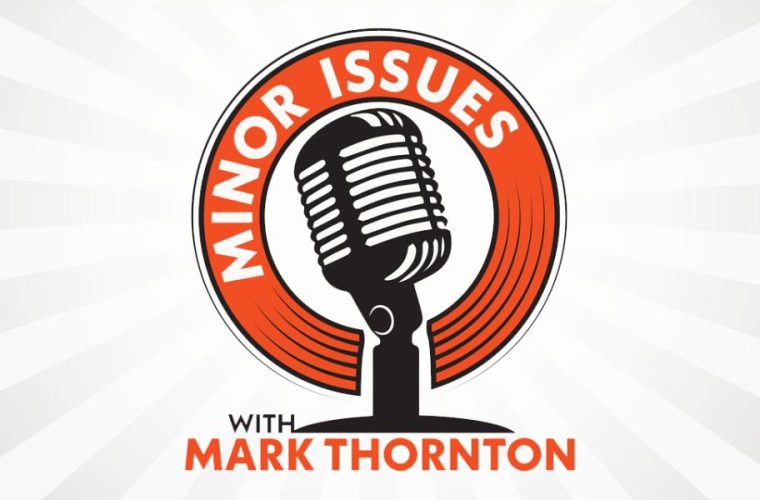
Loss of Religious Belief Is a Greater Loss for a Civilized Society
There has been a noticeable decline in the percentage of Americans identifying as religious. Some perceive this seismic shift as evidence of a secularizing culture. In some quarters, the secularization of America is viewed favorably as an agent of modernization. But researchers are theorizing that the erosion of religious beliefs portends negative consequences for society because religion cultivates meaningful social relationships by nurturing a sense of community.
Religious institutions hone social capital by fostering a strong sense of brotherhood that transcends tribalism. Religions also make it easier for societies to scale up by diminishing tribalism and promoting cooperation. Cooperative groups are more successful than divisive groups, and by engendering in-group solidarity, religious groups outperform their rivals. Essentially, dedication to religious norms and beliefs drives group solidarity and social cohesion. As a result, some of the largest and most successful institutions in the world are proudly religious.
Though religions are portrayed as conservative, history demonstrates that they have been the primary initiators of social change. Prior to Islam, few expected the Arabs to become architects of world empires, but the advent of Islam provided the fuel that motivated ordinary people and elites to conquer foreign territories. Likewise in Europe, the medieval church launched a legal revolution that upended the social order and established revolutionary universities.
As a social technology, religion is instrumental in shaping institutions, politics, and civil society. Education, welfare services, and even opportunities are usually provided by religious actors. Unlike state providers, religious institutions have an intimate relationship with beneficiaries and often emphasize moral and economic advancement. Seeing beneficiaries as part of a community helps to mitigate the isolating effects of poverty and marginalization.
The social connectedness embedded in religious institutions affords participants a higher sense of well-being. Naturally, social groups foster intimate relations, but most working-class people lack the resources and social capital to join elite social networks. Therefore, religious institutions serve as a safe space and a voice for the working classes. Interestingly, a recent article published in Psychological and Cognitive Sciences argues that policy makers should lament the decline in religion after observing that religion eases the burden of low socioeconomic status (SES).
As societies get richer, they become less religious; however, for those who remain poor, the psychology of religion acts as a coping mechanism that diminishes the emotional baggage of low SES. Poor people occupy a special position in several religions and are expected to reap rewards in the afterlife, whereas nonreligious people will judge themselves harshly if they fail to achieve. Quite unsurprisingly, the researchers concluded that lower SES diminished well-being, but the impact of SES on well-being was greatly attenuated in poorer countries.
Comparing Jamaica and Norway, the authors posited that “the psychological burden of lower SES was comparatively large in developed Norway . . . but that burden was non-significant in Jamaica.” Others have opined that plummeting rates of religious participation are linked to deaths of despair such as suicide, alcohol-related illnesses, and drug abuse. Religious involvement plays a pivotal role in making life meaningful, hence dwindling rates of religious participation indicate that many are deprived of community and a vital sense of purpose.
Deaths of despair have disproportionately plagued middle-aged, working-class whites who are disconnected from social networks, and increasing religious participation could thwart the demise of many working-class Americans. Using statistical analyses, the authors show that there is a direct link between deaths of despair and religious participation:
Religiosity and the rate of deaths of despair are negatively correlated across states; states with high levels of religiosity have suffered less from mortality due to alcohol, suicides, or drug poisonings. This negative relationship also holds when we consider changes in religiosity and mortality. States that experienced larger decreases in religiosity have had the largest gains in the rate of deaths of despair.
Additionally, scholars have also contended that religious institutions are more adept at serving the poor and minimizing moral hazards than government welfare. Religious institutions impose an obligation on all members to ensure that their requests for assistance are monitored to prevent the overuse of resources. Moreover, they are encouraged to improve the quality of welfare products.
Anthony Gill explains that religious charities are even more credible than secular nongovernment organizations due to norms of reciprocity:
The norms of reciprocity embedded within religious communities also contrast with the norms of secular NGOs, which generally distribute social benefits in a nonreciprocal fashion and expect little in return from the recipient. Recipients who are not members of that organization are less likely to restrain themselves from overusing the resource or to try to correct the problems that put them in need in the first place. As such, secular NGOs are more likely to generate moral hazard problems than religious groups that rely upon mutual community support.
Some celebrate the secularization of America, but it’s obvious that religions rejuvenate societies, and a more secularized population could result in a less dynamic America. Instead of seeing secularization as an indication of progress, policy makers should begin to prepare for the implications of a less religious society.



